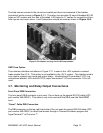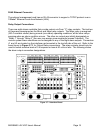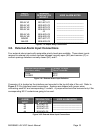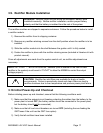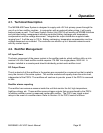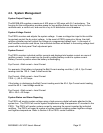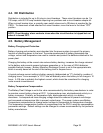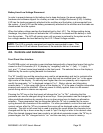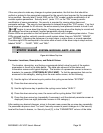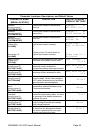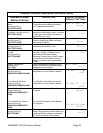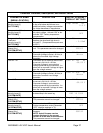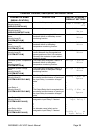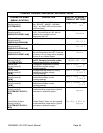
MX28B400 +24 VDC User’s Manual Page 22
4.4. DC Distribution
Distribution is included for up to 24 plug-in circuit breakers. These circuit breakers can be 1 to
100 amps, with 60-100 amp breakers requiring two positions and a circuit breaker adapter kit.
When a circuit breaker trips, a normally open switch closes and a CB alarm is reported by the
PSCU. To disconnect a load attached to a circuit breaker, move the lever to the down “OFF”
position.
NOTE: Circuit breaker alarm contacts close when the circuit breaker is tripped but not
when it is turned OFF.
4.5. Battery Management
Battery Charging and Protection
Battery charging and protection are integrated into the power system to support the primary
function of providing power to the load. Accurate measurement of battery parameters like
voltage, current and temperature are used to maintain and protect the batteries attached to the
power plant.
Charging the battery at the correct rate reduces battery heating, increases the charge returned
to the battery and prevents excess hydrogen generation or, in the case of VRLA batteries,
possible thermal runaway. Battery Maximum Recharge Current is set to the appropriate rate,
which is usually based on the size of the battery plant in Ampere-hours.
A typical recharge current setting is battery capacity (abbreviated as “C”) divided by number of
charging hours. As an example, a “C/10” rate will basically return the battery to full charge in 10
hours. A C/8 rate is probably the highest current, which should be considered for charging
under normal circumstances.
Battery Temperature Compensation
The Battery Float Voltage is set to the value recommended by the battery manufacturer in order
to maintain correct battery charge at 25ºC. As temperature rises, electrochemical activity in a
battery increases. Similarly, as temperature falls, electrochemical activity in a battery
decreases. As temperature rises charging voltage should be reduced to prevent overcharge
and increased as temperature falls to prevent undercharge. The power system uses Battery
Temperature compensation to change output voltage to compensate for temperature changes.
This temperature compensation function is programmed into the PSCU using the compensation
parameters settings. Default settings can be changed to values recommended by the particular
battery manufacturer.



